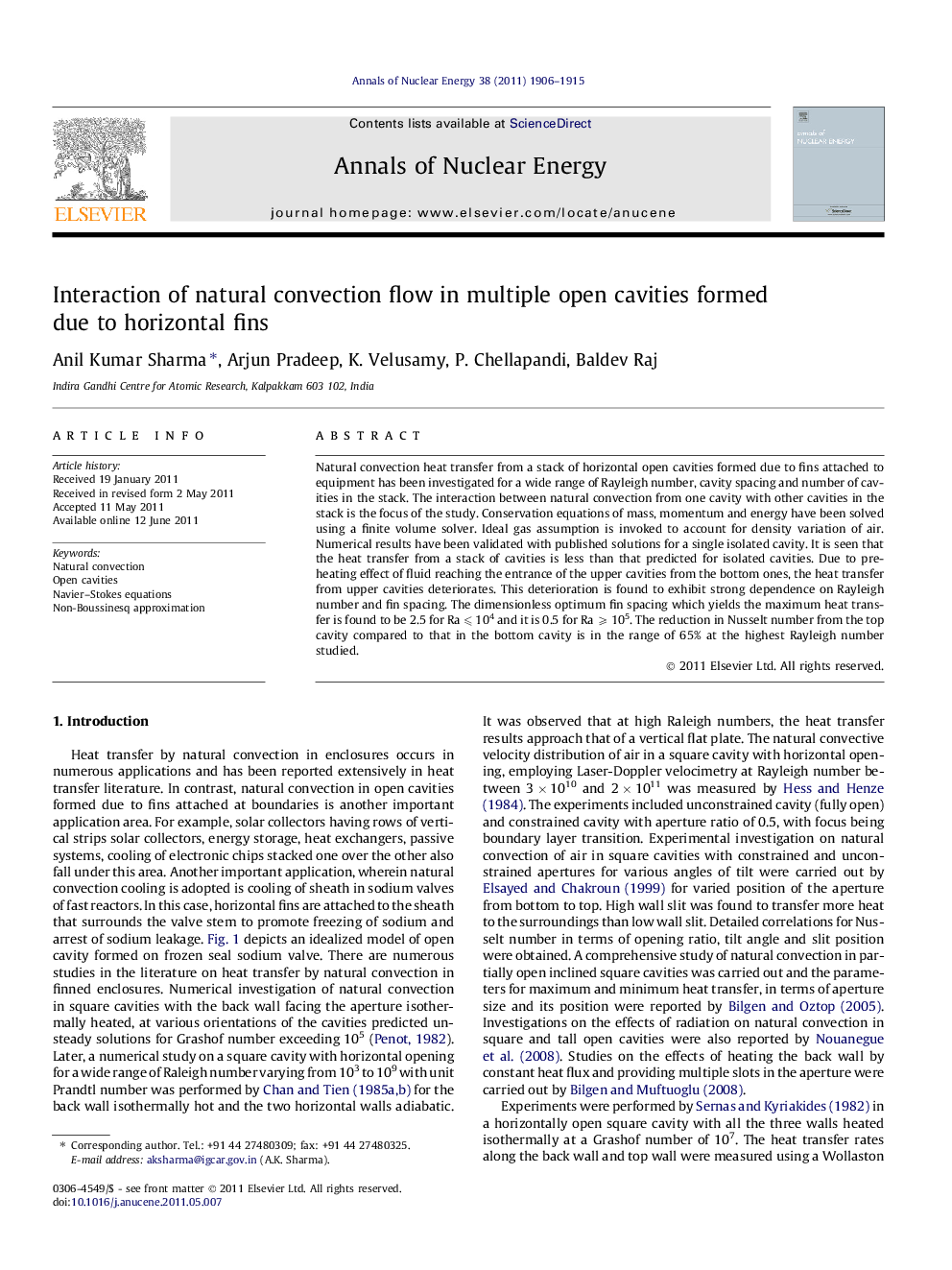| Article ID | Journal | Published Year | Pages | File Type |
|---|---|---|---|---|
| 1729320 | Annals of Nuclear Energy | 2011 | 10 Pages |
Natural convection heat transfer from a stack of horizontal open cavities formed due to fins attached to equipment has been investigated for a wide range of Rayleigh number, cavity spacing and number of cavities in the stack. The interaction between natural convection from one cavity with other cavities in the stack is the focus of the study. Conservation equations of mass, momentum and energy have been solved using a finite volume solver. Ideal gas assumption is invoked to account for density variation of air. Numerical results have been validated with published solutions for a single isolated cavity. It is seen that the heat transfer from a stack of cavities is less than that predicted for isolated cavities. Due to pre-heating effect of fluid reaching the entrance of the upper cavities from the bottom ones, the heat transfer from upper cavities deteriorates. This deterioration is found to exhibit strong dependence on Rayleigh number and fin spacing. The dimensionless optimum fin spacing which yields the maximum heat transfer is found to be 2.5 for Ra ⩽ 104 and it is 0.5 for Ra ⩾ 105. The reduction in Nusselt number from the top cavity compared to that in the bottom cavity is in the range of 65% at the highest Rayleigh number studied.
► Interaction of laminar natural convection among a stack of open cavities has been studied. ► Non-Boussinesq form of 2-D conservation equations of mass, momentum and energy are solved numerically. ► Rayleigh number, cavity spacing and number of cavities in the stack are considered as parameters. ► Cavities were found to interact among themselves thermally. ► Heat transfer reduces significantly from bottom cavity to top cavities in the stack.
